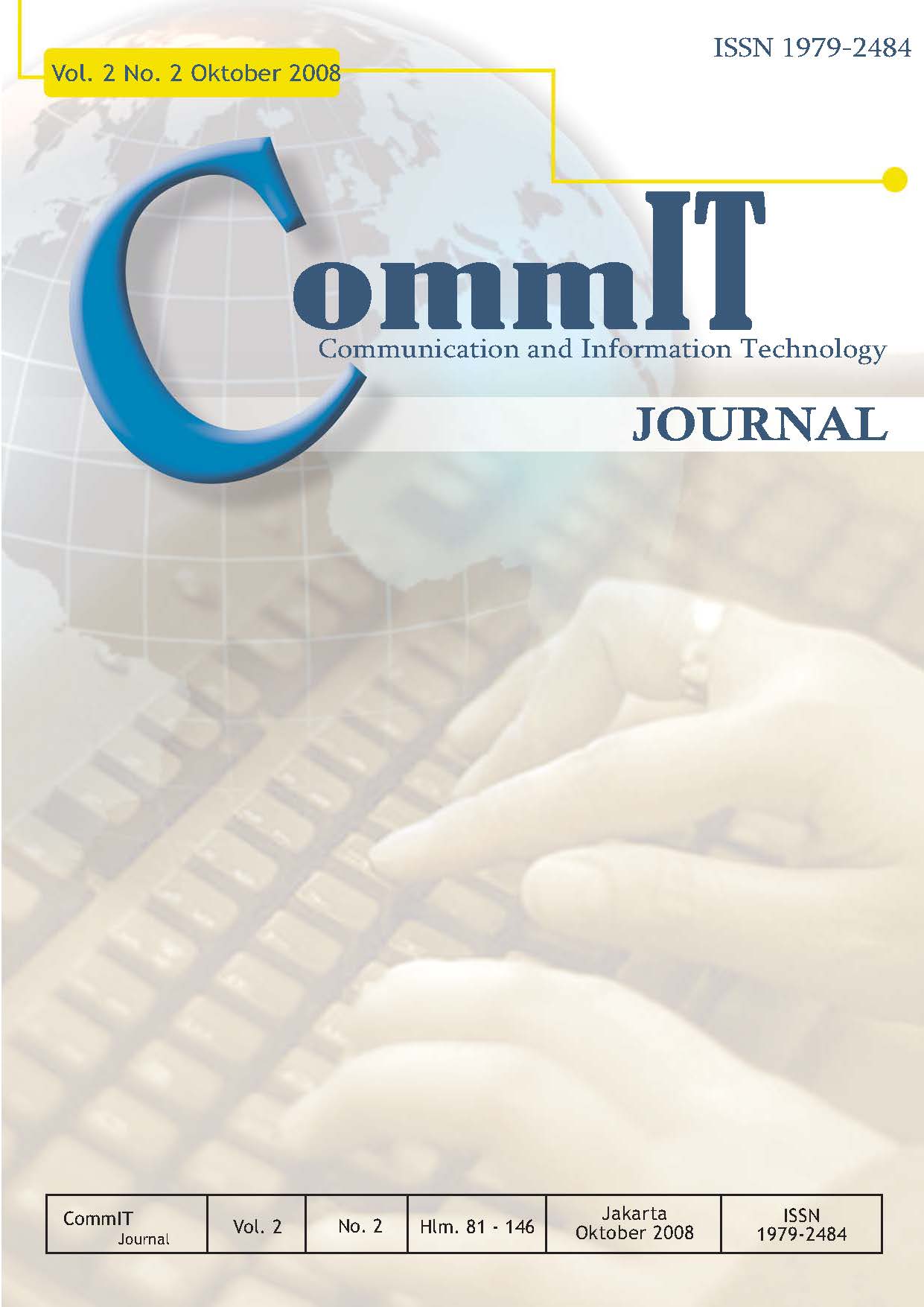SPEAKER IDENTIFICATION MENGGUNAKAN TRANSFORMASI WAVELET DISKRIT DAN JARINGAN SARAF TIRUAN BACK-PROPAGATION
DOI:
https://doi.org/10.21512/commit.v2i1.482Abstract
Article discussed a speaker identification system. Which was a part of speaker recognition. The system identified asubject based on the voice from a group of pattern had been saved before. This system used a wavelet discrete transformation
as a feature extraction method and an artificial neural network of back-propagation as a classification method. The voice
input was processed by the wavelet discrete transformation in order to obtain signal coefficient of low frequency as a
decomposition result which kept voice characteristic of everyone. The coefficient then was classified artificial neural network
of back-propagation. A system trial was conducted by collecting voice samples directly by using 225 microphones in non
soundproof rooms; contained of 15 subjects (persons) and each of them had 15 voice samples. The 10 samples were used as a
training voice and 5 others as a testing voice. Identification accuracy rate reached 84 percent. The testing was also done on
the subjects who pronounced same words. It can be concluded that, the similar selection of words by different subjects has no
influence on the accuracy rate produced by system.
Keywords: speaker identification, wavelet discrete transformation, artificial neural network, back-propagation.
Downloads
Published
How to Cite
Issue
Section
License
Authors who publish with this journal agree to the following terms:
a. Authors retain copyright and grant the journal right of first publication with the work simultaneously licensed under a Creative Commons Attribution License - Share Alike that allows others to share the work with an acknowledgment of the work's authorship and initial publication in this journal.
b. Authors are able to enter into separate, additional contractual arrangements for the non-exclusive distribution of the journal's published version of the work (e.g., post it to an institutional repository or publish it in a book), with an acknowledgment of its initial publication in this journal.
c. Authors are permitted and encouraged to post their work online (e.g., in institutional repositories or on their website) prior to and during the submission process, as it can lead to productive exchanges, as well as earlier and greater citation of published work.
Â
USER RIGHTS
All articles published Open Access will be immediately and permanently free for everyone to read and download. We are continuously working with our author communities to select the best choice of license options, currently being defined for this journal as follows: Creative Commons Attribution-Share Alike (CC BY-SA)




















